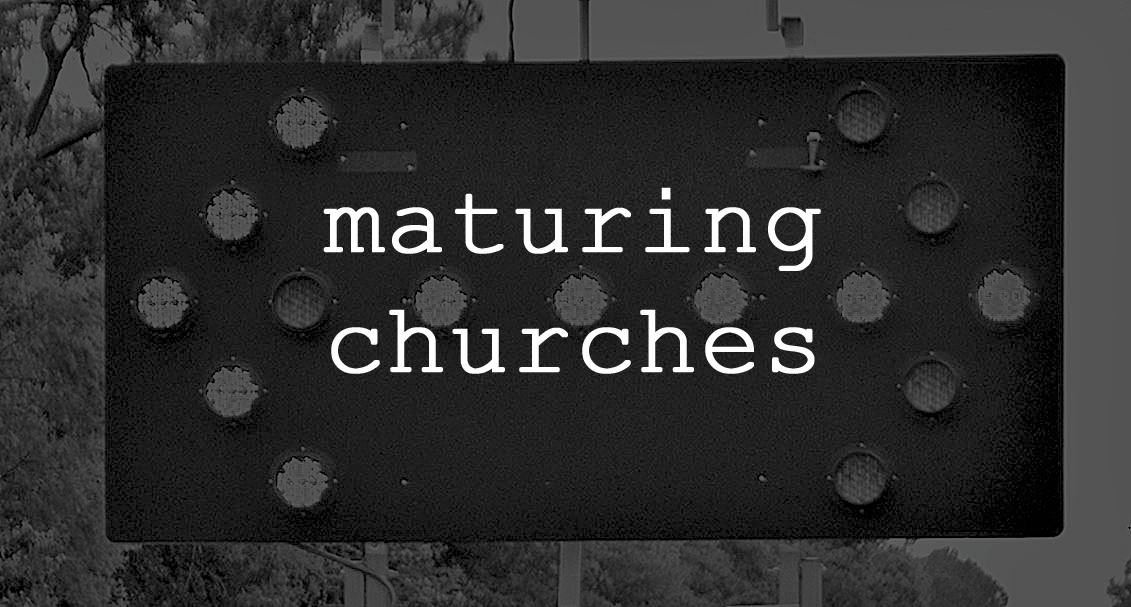Signals for a Maturing Church

Sam Rainer
Is your church healthy or not? It’s a difficult question to answer. When people ask, I often reply, “What is your definition of ‘healthy?’” There are many metrics that point to—or signal—the health of a congregation. If attendance has declined for 50 years and the church has not baptized anyone in 10 years, then the likelihood of that church being unhealthy is high. But a fast-growing church may or may not be healthy. Defining church health is a bit of a moving target.
As most established church pastors know, you inherit a culture when you come to a church. Changing that culture takes time. Therefore, “healthy” is more a process than a static point. You are either becoming healthier or less healthy. In each church, there should exist a maturing process. I use the word “maturing” as opposed to “mature” to indicate the process of becoming healthy. We never really arrive at a point of maturity, individually as a member or collectively as a church.
Some pastors land at a rapidly maturing church. Others inherit messes. A few walk into death traps. Ironically, the least mature churches at times can be the oldest. And new congregations are not necessarily immature. Blaming a new pastor for the unhealthy state of a 100 year-old, multi-decade declining congregation is like blaming brand new homeowners for the ramshackle home they just bought. Give them time, and the transformation will happen. But it takes time.
Paul writes, “Not that I have already reached the goal or am already fully mature, but I make every effort to take hold of it because I also have been taken hold of by Christ Jesus.” We don’t arrive as believers until we are glorified, but there is a process of maturing along the way.
How can churches know they are maturing—moving towards better health? How might leaders discern if a church is moving forward and not backward? Like the flashing arrow sign on roadways, certain signals provide a direction.
Signal 1: Maturing churches have a posture of service, especially the leaders. Maturing churches have leaders that serve first and lead second. When people are willing to take a posture of service and wash feet, it speaks volumes to the general tone and direction of a congregation.
Signal 2: Maturing churches have an outward focus. The people in these congregations have a desire to reach others that are not like them. These churches know their community, are committed to diversity, and are willing to make sacrifices to reach the next generation.
Signal 3: Maturing churches have a large segment of people who attend frequently. No church can work towards a healthier state when people do not gather together. In fact, a culture of infrequent attendance produces a death spiral from which few churches recover.
Signal 4: Maturing churches build community in small groups. There is no such thing as a healthy church without healthy small groups.
Signal 5: Maturing churches pray regularly. The prayers of the people in these congregations are not only reactive (someone is ill) but also proactive (reveal a lost person for me to reach).
Signal 6: Maturing churches understand the difference between personal preferences and vision. These congregations build upon the past, but they also know greater things are out in front and not in behind them.
Signal 7: Maturing churches not only understand the “what” of discipleship but also the “how.” They have a clear process of making disciples.
Obviously, this list of signals is not all-inclusive. But they act like giant flashing arrows, pointing a church towards an avenue for better health. If many of these signals are absent in your congregation, then it might be time to change direction.







One comment on “Signals for a Maturing Church”